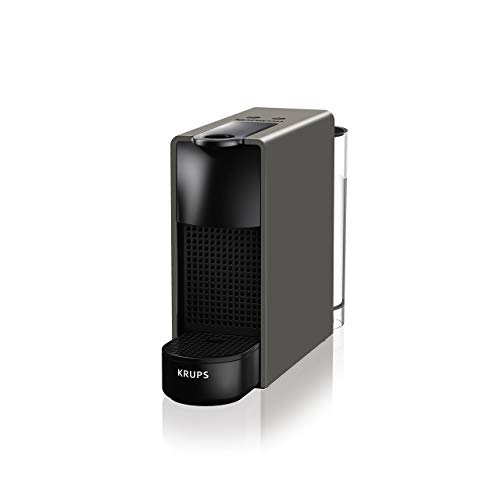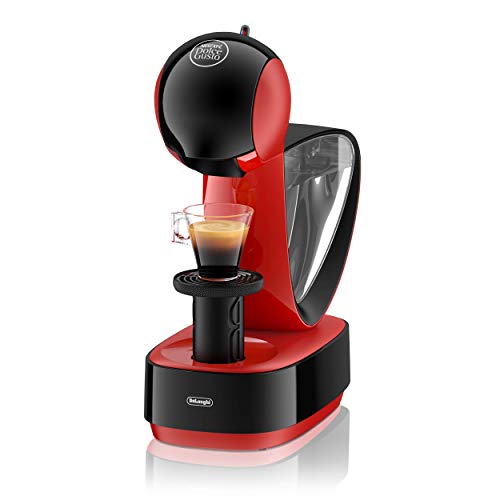5 Killer Quora Answers To Pod-Making Machines
페이지 정보

본문
There are a myriad of pod coffee machines capsules that are available, from K-Cup (r) and Tassimo (tm) to Nespresso (tm) or Senseo(tm). Each pod capsule coffee maker machine works similarly, by heating water and pressing buttons.
 The pod-making procedure is more complex yet it's still simple enough to do yourself. Here are a few points to look out for when buying a pod-making device:
The pod-making procedure is more complex yet it's still simple enough to do yourself. Here are a few points to look out for when buying a pod-making device:Detergent Pod Manufacturing
Detergent pods are convenient efficient, effective, and environmentally friendly. How do they make them? The process is surprisingly straightforward. A single-dose pod is made up of a dissolvable film that dissolves upon contact with water. This film is typically made from polyvinyl alcohol, which dissolves in water and does not leave any residue on clothing. The detergent formula also includes chelating agents that soften hard water, slow down the degradation of detergents, and optical brighteners for whites.
The sachets will then be sealed to guard the contents against moisture and contamination during storage, transit, and during use. Laundry pod manufacturers use advanced production techniques to keep up with demand. They can make between 600 and 240 pods every minute. This ensures that the products meet deadlines.
Tide manufactures a portion of these pods. Tide uses top-quality, U.S-made ingredients, and does not import cheap substitutes. It also takes steps to trace and verify its raw ingredients.
A laundry pod making machine has a product hopper which holds liquid detergent until it is used. A precise dispenser fills each pod with the exact amount of detergent. Then, the machine heats seals each pod. The unique design of the machine protects the film that is water-soluble, while routine inspections ensure 0.02ml accuracy.
In addition to PVA and PVA, pod films also contain minor ingredients that help them fend off liquids and impart other characteristics, such as tasting awful. For instance, MonoSol uses Bitrex, a quaternary ammonium compound known as denatonium. This chemical is so bitter that it can repel people in concentrations of as little as 0.01 percent. It also can deter children and pets from putting the sachets into their mouths.
When you're not using your laundry pods, keep them out of sight and out of reach of children or pets. Keeping them away from moisture and light can prevent their ingredients from degrading too quickly while ensuring proper storage conditions can extend the life of the detergent inside the pod. Also, ensure that you be sure to properly dispose of laundry pods after use.
Detergent Packaging for Pods
Detergent pods are a booming trend, gaining market share for laundry and dishwasher detergents, as well as personal products like shampoo. They are a concentrated mix of surfactants, cleaning ingredients and a water-soluble coating. They are convenient to use, convenient to store and are a safe alternative to liquid detergents.
Pods aren't the same as traditional detergent containers made of PET plastic, which may contain harmful chemicals such as 1,4 dioxane. Instead, they are made up of a cocktail harsh chemicals surrounded by a polyvinyl-alcohol film. The chemicals used in these containers can differ based on the brand. They may include bleaches and surfactants as well in optical brighteners, solvents or enzymes. The manufacturers disclose these ingredients on their websites.
The PVA used in the film to cover the pods is biodegradable, and is listed on the Environmental Protection Agency's CleanGredients database. It also has received the Nordic Swan eco-label, one of the strictest independent eco-labels available. The EPA says it can be broken into natural, simple compounds that are found in soils and wastewater plants.
Laundry pods are an extremely popular alternative to liquid detergents and many brands provide an array of options, including basic laundry detergents to stain removers and fabric softeners. According to a Nohbo study, in the US laundry pods make up 15 percent of soap sales for household use.
The majority of pods contain just one dose, but some contain fabric softeners and stain removers as well as scent boosters. Many manufacturers add anti-bacterial properties to the detergent to fight off bacteria, as well.
Despite their ease of use, some people have complained that laundry pods do not dissolve completely. This can happen if you overfill the washer tub, use water that is too cool, or introduce the pods too earlier in the cycle. This can also happen if a consumer doesn't read the instructions, since the pods require a specific temperature and pressure of water to dissolve.
The pods are not toys. Therefore, the consumer should keep them in a secure location and keep them from children. Likewise, they should always be empty of their contents prior to putting them in the dishwasher or washing machine. The packaging that results should be recycled as quickly as possible in order to reduce pollution and reduce the amount of waste.
Detergent Filling of Pods
Laundry pods are quickly replacing traditional liquid detergents in the cleaning market for households. These tiny containers are easy and convenient to use, and they don't require measuring. They are also available in a variety of sizes and strengths. Depending on your laundry needs you can pick from single-dose laundry detergent pods, multi-compartment pods or even powder detergent pods.
The secret to pods is their thin film that encapsulates them. It needs to keep its shape while retaining chemically active liquids and solids but must dissolve quickly and completely in water--even cold water. Many firms have landed on a polymer called PVA that has both of these properties. The rest of the pod contains a blend of potent detergents bleaches, solvents, optical brighteners, enzymes and preservatives. Typically, manufacturers reveal the ingredients of their detergents.
Unlike liquid and powder detergents that are packaged in high-density plastic, pods are made of polymers made from plants that can be broken into smaller pieces by microbes that live in soil or ocean waters. Scientists at the Woods Hole Oceanographic Institution claim that PVA degrades in less than 70 day in sewage sediments. This is significantly faster than conventional detergents, which can take hundreds of years to break down.
Although laundry pods have revolutionized the way we wash clothes but they do have their disadvantages. They're, for one, more expensive than powder and liquid detergents. If you accidentally spill the pod, you'll be confronted by a unpleasant taste as well as chemical burn.
Another drawback is that they're not as flexible as traditional detergents. Using a laundry pod limits you to the specific wash cycle that's listed on the package, which could be problematic if you have a front- or top-loading washer that has an automatic detergent dispenser or fabric softener. If your washer has an agitator, the laundry pods might not disintegrate properly.
Contact your local laundromat for the best choice. And always read the instructions carefully. If your clothes have streaks or spots after washing them with a pod add no more detergent. Do not put detergent-stained clothing in a dryer, as the heat can make the stains more difficult to remove later.
Detergent Inspection of Pods
Laundry detergents pods are very well-known because they dissolve quickly and efficiently in hot soapy water and remove stains on most fabrics. The pods aren't without controversy. Many activists refer to them as plastic and they're a major source of marine debris. While it is true the polyvinyl alcohol and PVOH that are used to make pods are made from petroleum, the makers claim that these plastics are not as harmful as other kinds of plastics since they are biodegradable in water.
Since their introduction in 2012, laundry pods have grown in popularity. They now account for nearly a third of liquid detergent sales in the United States. Numerous major brands are now selling the sachets, which are comparable in size to ice cubes, and are available in various colors and scents. The pods, which are marketed as eco friendly are a result of the concentration of detergent in a pre-measured amount. According to the Cleaning Institute, which represents large multinational companies like Procter and Gamble, this results in less packaging and weight and lower shipping emission. The capsule coffee makers also claim that the pods' starches from plants and other natural substances help to make them water-soluble and they can be biodegraded in a short time in water treatment facilities.
The pods are still hazardous if handled incorrectly, despite all the hype. The thin membranes that contain the detergent can easily break open and cause irritation to skin or eyes. If they are inhaled, they can also cause poisoning by chemical. The outer packaging that is designed to keep children out of the pods can also split at the zipper track. Consumer Reports asked manufacturers to make pods more secure in September 2012 by changing the transparent containers to opaque ones, and also adding child-resistant locks. Many manufacturers responded, and some added additional safety warnings.
 To avoid any problems, keep the pods away from children, seniors and pets. Keep them in a high place or locked away to discourage children from mistaking them for candy, and ensure that the detergent you are using is compatible with the type of washer you use. Be aware that cold water - especially when it's lower than 60 degrees Fahrenheit, may not dissolve the pod and bean coffee machine and could create a blockage for your capsule coffee machine uk or leave residue of detergent on the fabric.
To avoid any problems, keep the pods away from children, seniors and pets. Keep them in a high place or locked away to discourage children from mistaking them for candy, and ensure that the detergent you are using is compatible with the type of washer you use. Be aware that cold water - especially when it's lower than 60 degrees Fahrenheit, may not dissolve the pod and bean coffee machine and could create a blockage for your capsule coffee machine uk or leave residue of detergent on the fabric.- 이전글15 Shocking Facts About SEO Agency London The Words You've Never Learned 24.09.10
- 다음글카지노꽁머니 TOP 5 먹튀검증된 ✅먹튀센터✅ 토토커뮤니티 안내 24.09.10
댓글목록
등록된 댓글이 없습니다.

